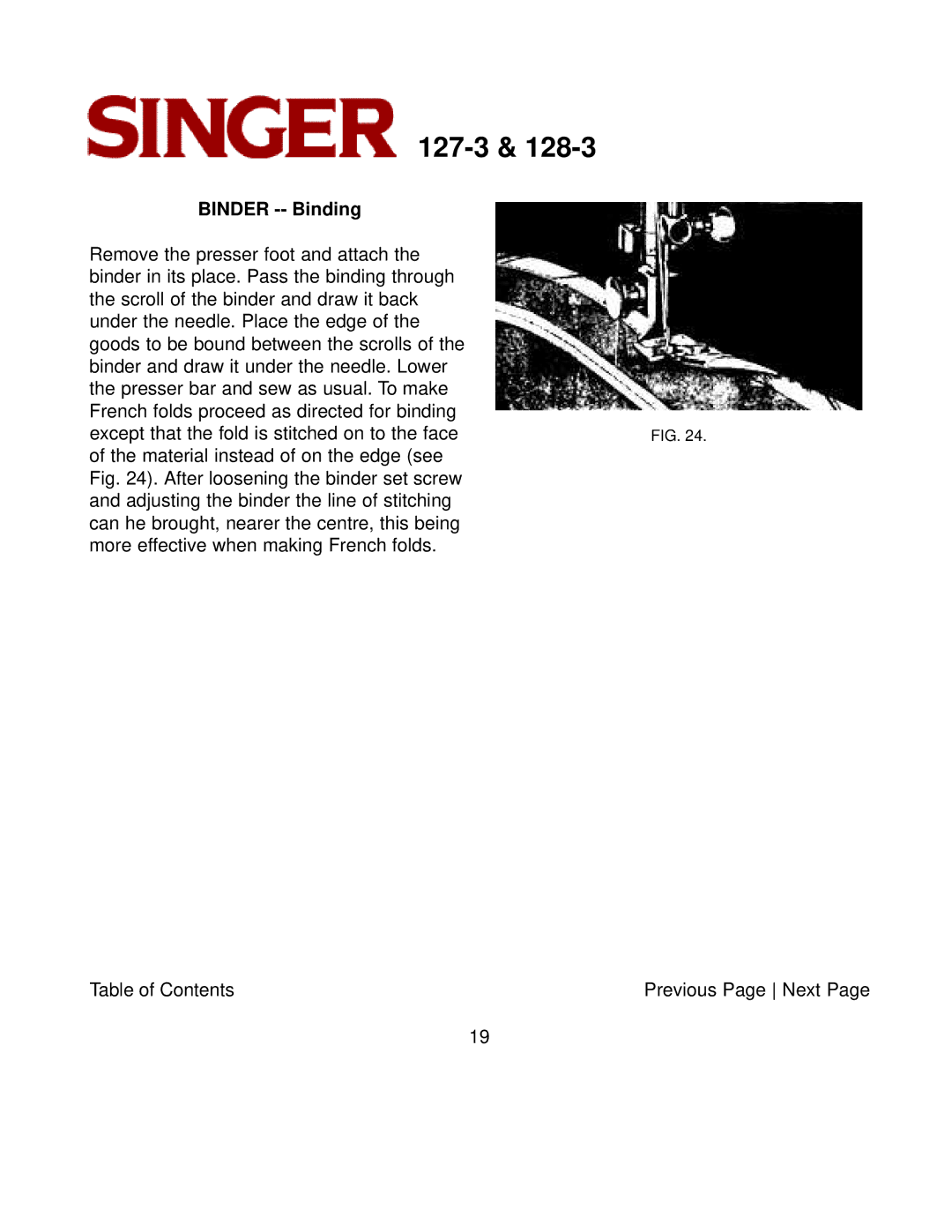127-3 & 128-3 specifications
The Singer 127-3 and 128-3 are classic sewing machines that have captured the hearts of sewing enthusiasts since their introduction in the early 20th century. These machines are part of the "Sewhandy" line, known for their portability and ease of use, making them particularly popular among home crafters and professionals alike.One of the main features of the Singer 127-3 and 128-3 is their compact design, which allows for easy transportation and storage. Weighing approximately 12-13 pounds, these machines can be easily carried to sewing classes or craft gatherings, adding to their appeal as versatile tools for sewing on the go.
The Singer 127-3 and 128-3 also showcase many of the innovative technologies that Singer is known for. These machines come with a robust gear-driven mechanism that provides consistent tension and stitch quality, ensuring a smooth sewing experience. The machines offer a variety of stitch options, including straight, zigzag, and a range of decorative stitches, enabling users to take on diverse sewing projects.
Additionally, both models are equipped with a drop-in bobbin system, allowing for easy threading and bobbin changes. This user-friendly feature is particularly beneficial for beginners who may find traditional bobbin systems daunting.
The construction of the Singer 127-3 and 128-3 is characterized by a sturdy metal frame, providing stability during sewing operations and longevity through years of use. The machines also include adjustable stitch length and width, giving sewists the flexibility to customize their sewing according to the fabric and project requirements.
Another noteworthy characteristic is the free-arm capability, which allows for easy maneuverability when sewing tubular items, such as sleeves and pant legs. This feature enhances the overall sewing experience and adds to the machine's functionality.
In summary, the Singer 127-3 and 128-3 are exemplary models that highlight Singer's commitment to quality, portability, and user-friendly design. With their combination of classic aesthetics, reliable performance, and practical features, these machines continue to be a favorite choice for both novice and experienced sewists, embodying the timeless art of sewing.

